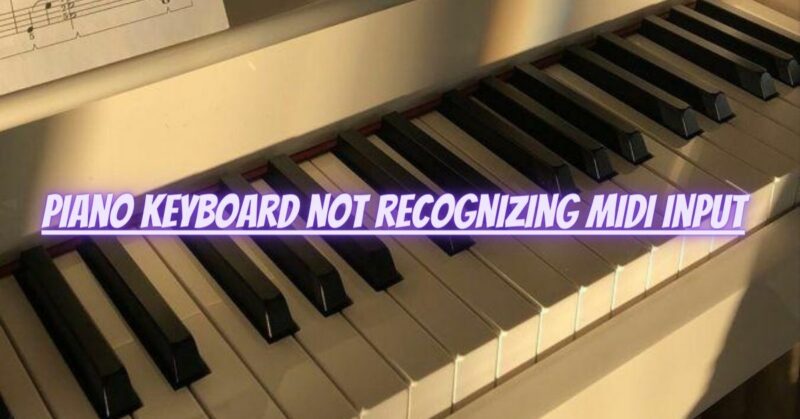Connecting your piano keyboard to external devices via MIDI (Musical Instrument Digital Interface) is a common practice for musicians, allowing for versatile music production and performance. However, encountering issues where the piano keyboard fails to recognize MIDI input can be frustrating. When MIDI input is not recognized, it hinders your ability to use the keyboard as a MIDI controller and access its full potential. In this article, we’ll explore common causes of MIDI input recognition problems on a piano keyboard and provide step-by-step troubleshooting to address the issue.
1. Verify MIDI Connections:
The first step is to ensure that all MIDI connections are secure and properly connected.
Solution:
- Check the MIDI cables or USB connection between the piano keyboard and the external device (computer, synthesizer, etc.).
- If you are using a MIDI interface, verify that it is connected correctly to both the piano keyboard and the computer.
2. MIDI Channel Mismatch:
Mismatched MIDI channels can cause the piano keyboard not to recognize incoming MIDI data.
Solution:
- Ensure that the MIDI channel on the external device matches the MIDI transmit channel on the piano keyboard. Refer to the user manual for instructions on how to change the MIDI channel.
3. MIDI Thru Setting (If Applicable):
Some keyboards have a MIDI Thru setting that can affect MIDI input recognition.
Solution:
- Check if your piano keyboard has a MIDI Thru setting and make sure it is properly configured. If it is enabled, try disabling it and see if the MIDI input is recognized.
4. Check MIDI Settings on External Device:
Incorrect MIDI settings on the external device may cause communication issues with the piano keyboard.
Solution:
- Check the MIDI settings on the computer software or synthesizer to ensure it is receiving MIDI input from the correct MIDI channel and port.
5. MIDI Driver and Software Updates:
Outdated or incompatible MIDI drivers can result in MIDI input recognition problems.
Solution:
- Update the MIDI drivers for your piano keyboard to the latest version from the manufacturer’s website.
- If you are using MIDI software on your computer, ensure it is updated to the latest version.
6. Test with Different MIDI Device:
Test the piano keyboard with a different MIDI device to verify if the issue lies with the keyboard or the external device.
Solution:
- Connect the piano keyboard to a different MIDI controller or computer to see if MIDI input is recognized.
- If the keyboard works with another device, the problem may be with the original external device.
7. Reboot All Devices:
Sometimes, a simple reboot of all devices can resolve MIDI recognition issues.
Solution:
- Turn off both the piano keyboard and the external device (computer, synthesizer, etc.).
- Restart all devices and try connecting again.
8. Factory Reset (Advanced Step):
If none of the above solutions work, you may consider performing a factory reset on the piano keyboard.
Solution:
- Refer to the user manual for instructions on how to perform a factory reset. Note that this will reset all settings to their default values.
Conclusion:
MIDI input recognition issues on a piano keyboard can be resolved with careful troubleshooting and attention to MIDI settings and connections. By verifying MIDI connections, checking MIDI settings on both the keyboard and external device, updating drivers and software, and testing with different devices, you can often diagnose and address the problem. If the issue persists, consider contacting the manufacturer’s support or seeking assistance from a qualified technician for further diagnosis and repair. With a properly functioning MIDI connection, you can fully utilize your piano keyboard’s capabilities and enjoy seamless integration with your music production and performance setup.


